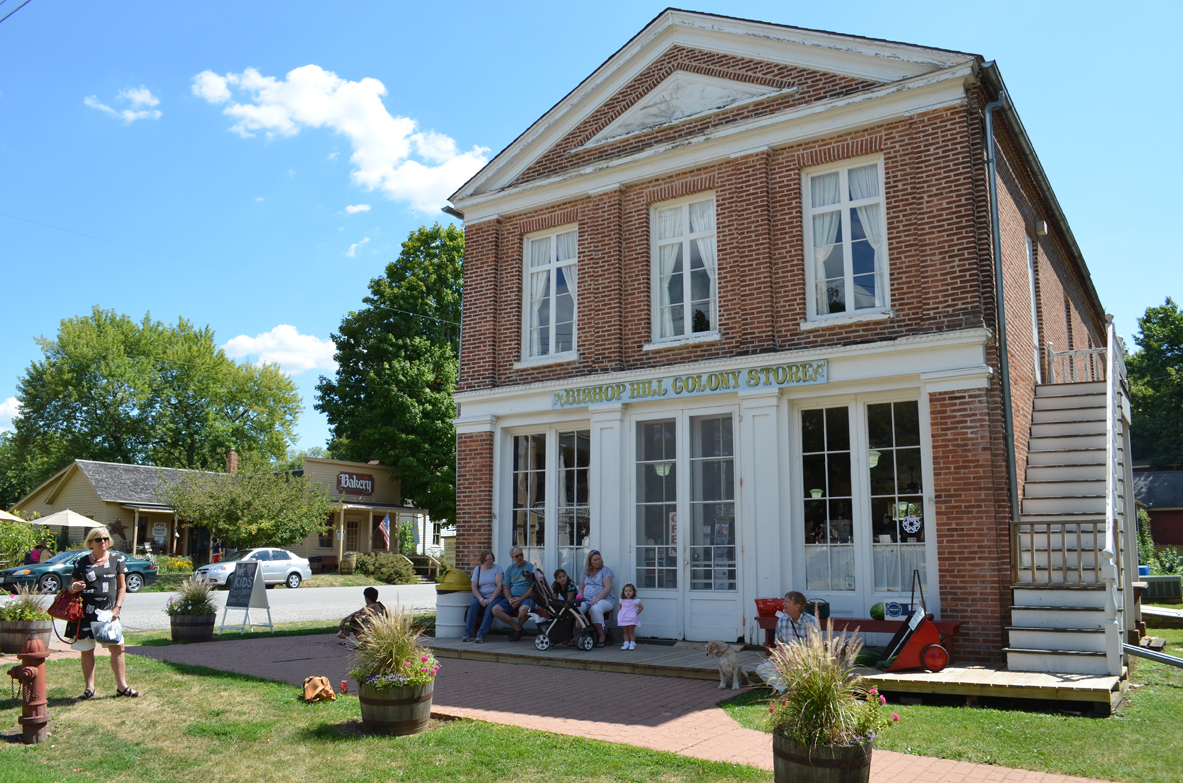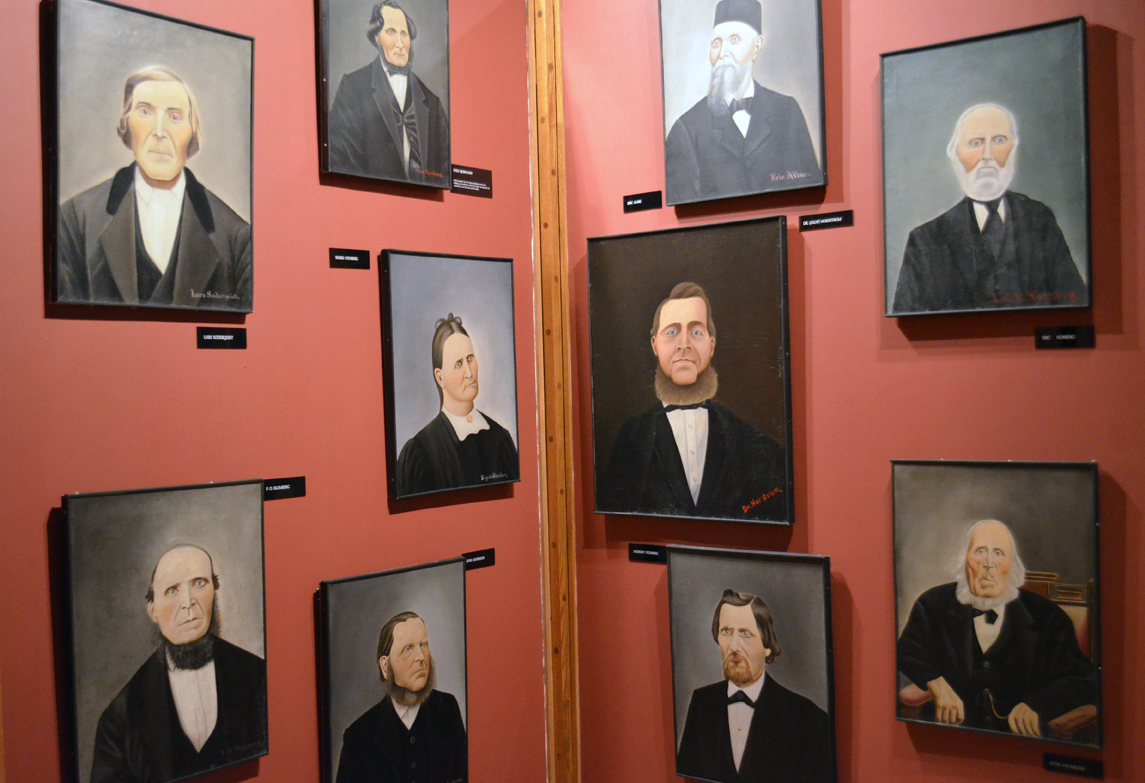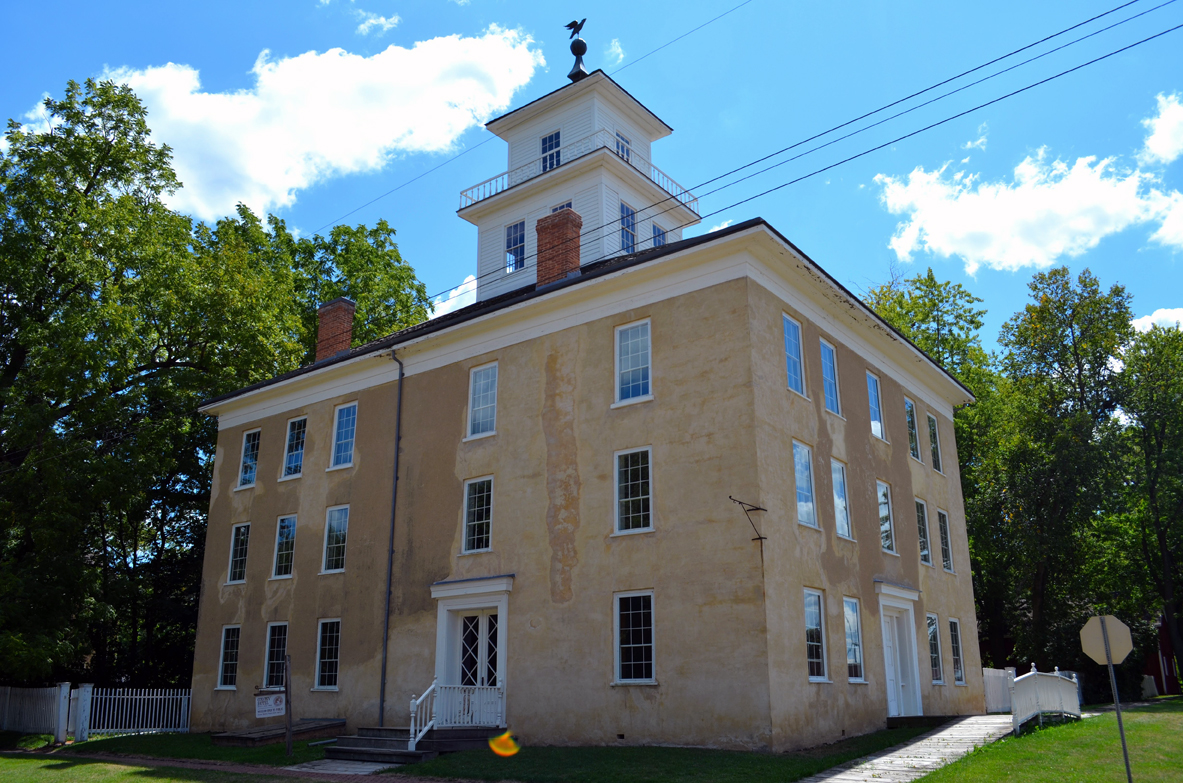The Living History of Bishop Hill
..hands-on reminder of the hardships, the communal efforts and the determination of the early Swedish immigrants.
-
 The Colony Store offers visitors traditional Swedish delicacies.
The Colony Store offers visitors traditional Swedish delicacies. -
-
It is relatively easy to find breathtaking stories in literature and museums on immigration movements to America. However, not many places offer living history in authentic villages from the early years of immigration.
Bishop Hill, an unfeigned historical monument in Swedish immigration history is still standing strong in western Illinois. The village and its buildings are not only Swedish landmarks but also part of the greater immigrant history of this country.
The area was undiscovered soil until 1846, when a group of Swedes left their native country and all they knew behind, in order to create a utopian society on collective attribution and religious freedom.
A colony of 1,000 dedicated supporters followed their charismatic and spiritual leader Erik Jansson to establish Bishop Hill Colony, named after his birthplace Biskopskulla in Uppland, nearby Uppsala, Sweden.
The Jansonists considered themselves Bible readers, following God’s word. They opposed the Lutheran Church of Sweden, and many of them were arrested several times for burning the works of Martin Luther. Jansson expected his followers to interpret the message of the Bible and let God speak directly to them. In 1844, he claimed to be an actual prophet speaking the word of God.
Erik Jansson was controversially murdered in 1850 in a triangle drama, only four years after the founding of Bishop Hill Colony. The leadership was taken over by an assembly of seven board members but the colony was later dissolved and property divided among its members. The villagers lived as a collective religious colony for 15 years, from 1846 to 1861. -
 Paintings by Olof Krans—portraits of Janssonists.
Paintings by Olof Krans—portraits of Janssonists. -
-
Spirited community
One hundred and sixty-eight years have passed since its establishment, however a great deal of Bishop Hill has remained the same. The community is still plowing the soil, nurturing animals, and buildings built by hand stand proudly present. Bishop Hill was designated a National Historic Landmark in 1984, and today the village is owned and maintained by Bishop Hill Heritage Association and Illinois Historic Preservation Agency.
As a significant tourist attraction in the midwest, Bishop Hill offers an authentic illustration of the colonists’ lives. Visitors can stroll in the footsteps of the villagers and return to a life of simplicity, quiet and natural beauty.
Cheryl Wexell Dowell's grandparents belonged to the Janssonists that came on the first ship to Bishop Hill from Hälsingland, Sweden in 1846. She grew up in the village and is still there today.
“The community spirit is still alive, everyone here cares about the history of our ancestors. We are trying to preserve the colony and keep our story alive,” Wexell Dowell said .
The restoration and reparation of dilapidated buildings is an ongoing process. Funding is always a problem but through generous contributions from villagers, outsiders and the Swedish Royalty, the story of Bishop Hill Colony is alive.
Bishop Hill has even kept its “Swedishness” and traditions. Villagers still give their children traditional Swedish names. Ingrid, Beata, Hanna, Sven, Per, Kerstin and Erik are popular names, and old customs such as the “Julotta” service early on Christmas Day are still practiced in the village. The colony store offers its visitors traditional Swedish delicacies, and lutfisk, herring, knäckebröd, jordgubbar, band ost and glögg are highly valued products in Bishop Hill.
“Bishop Hill is a place for all kinds of people but it’s through the town history in many ways a special tribute to Scandinavians,” said Wexell Dowell. -
 The Colony Hotel was originally built in 1852 as a dwelling for Colonists.
The Colony Hotel was originally built in 1852 as a dwelling for Colonists. -
For information about upcoming events, visit http://www.bishophill.com/ or call 309-927-3899/309-927-3345.
Text & Photography: Erik Kinnhammar -
-
